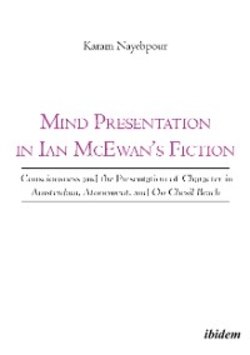Читать книгу Mind Presentation in Ian McEwan's Fiction - Karam Nayebpour - Страница 13
2.2 Alan Palmer's Approach to Fictional Minds
ОглавлениеPalmer in Fictional Minds (2004), chapters six »The Fictional Mind« and seven »The Fictional Mind in Action,« gives the outline of his »newly expanded, postclassical narratology of the fictional mind« approach which relates »some cognitive science notions to the specific area of reader comprehension of fictional minds« (17, 175). The previous approaches, according to Palmer, have ignored the central role of the workings of characters' minds while they should be the primary concern of any theoretical analysis of fiction. Palmer builds his approach to fictional minds on five main previous concepts within narrative theory—Story Analysis, Possible Worlds Theory, Characterization, Focalization and Cognitive Science and Frames. However, he finds their attention to fictional minds, which »adjuncts to those other fields,« insufficient. Ignoring the workings of characters' minds, they were primarily concerned with »the analysis of spoken speech in the case of the speech categories; various aspects of discourse analysis in the case of focalization; intertextuality in the case of characterization; classical structuralism in the case of story analysis; and modal logic in the case of possible-worlds theory« (Palmer, Fictional 2). Palmer, however, turns to account some of the fundamentals of these approaches in order to propose a new subject area within narrative theory. In that case and in order to handle his interdisciplinary project, he makes use of what he calls »the parallel discourses[29] on real minds« (»The Lydgate« 152). His approach to fictional minds, therefore, includes some of the notions of reader response theory, some of the disciplines related to real minds, (folk) psychology, philosophy of mind, psycholinguistics, cognitive science etc. The questions in his theory address subjects: How fictional characters' minds operate in the chosen narratives? How narrative provides reader with the necessary interpretational tools? How a reader understands them? By what means? Palmer's theory deals with the textural features and textures that provide cues for the readers in order to analyse the presentation of the characters' minds as they are presented by the narrators as well as are judged, thought, perceived etc. by the characters themselves and by the other characters within the storyworld. His theory, furthermore, underscores the role of the readers'
